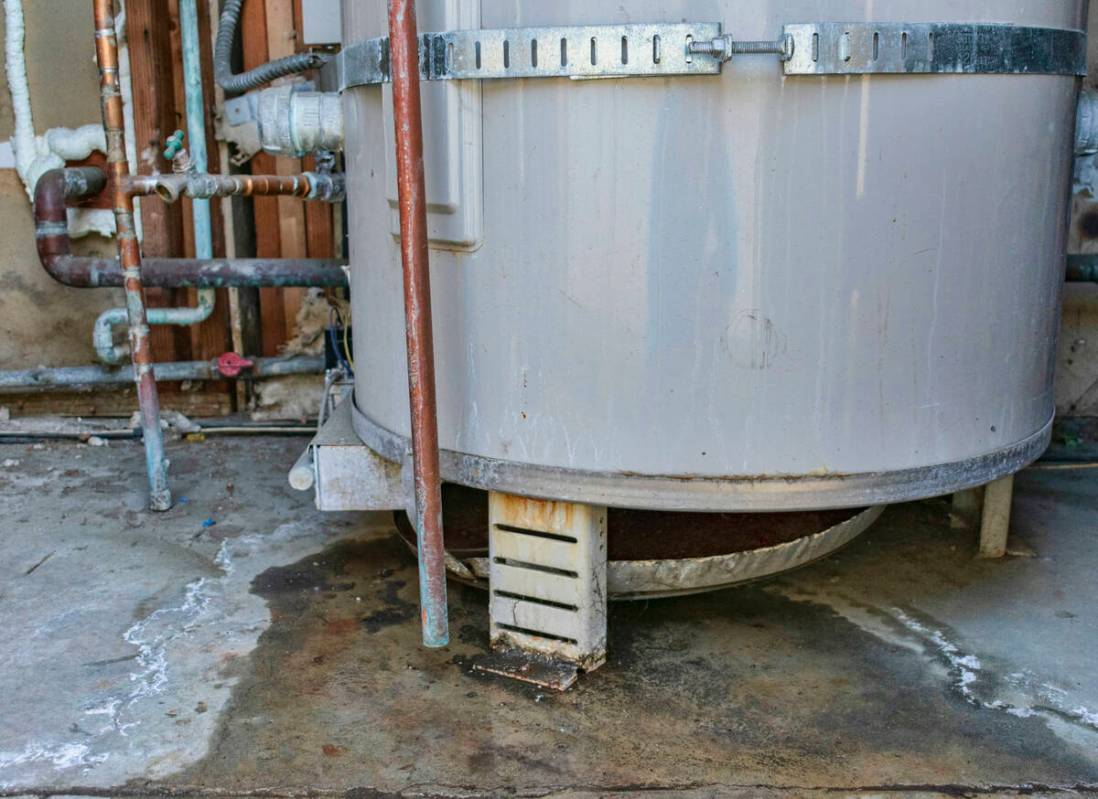Drain pan is useless if it is not connected to drainpipe

Q: My water heater sprang a leak, and water ran all over my drywall and onto my garage floor. A neighbor told me I should have had a pan installed under the water heater to catch all the water that flowed out of it. How do I install one?
A: Many people have drain pans installed under their water heaters or washing machines, but it amazes me that many of those pans are not connected to a drainpipe to move the water out of the area. With that setup, all you are doing is delaying the inevitable flood by about two minutes. Once the pan fills with water, it overflows.
With a drain line installed, the water flows out via the drainpipe instead of overflowing. Without a properly installed drain pan, your water heater will create a mess when it springs a leak.
Installing a drain pan is straightforward, but it’s a pain because the water heater (or washing machine) is very heavy. This is a two-person job, so you will need some help.
We get calls to replace drain pans from installers who have cracked the pan during installation. The pans are metal or plastic and are flimsy, so it doesn’t take much to damage them. You have to be careful setting the appliance into the pan.
You will have to drain the water heater and disconnect the piping to it. Then you can lift it up, slide the pan under it and gently set it down into the pan.
Some pans have a knockout in the side for a drain attachment, and some you will have to drill a hole. If you have to drill, locate the hole in the sidewall closer to the bottom of the pan rather than the top. Insert a male adapter through the inside of the hole and run the pipe to the exterior.
Run the pipe so that it is gravity-fed with no rise in it. In other words, the pipe should run downhill, as a rise could cause the pan to overflow.
A washing machine upstairs without a drain pan is a disaster waiting to happen. Builders will install a floor drain so if a hose breaks the water at least has somewhere to go.
If you don’t have a floor drain, the job is probably a little beyond the skills of your average do-it-yourselfer. It involves installing a sanitary tee in the drainpipe above the trap but below the bottom of the pan. You’re probably better off leaving that one to the professionals.
If you have a floor drain, you can cut a hole in the bottom of the pan and install a drain connection to the floor drain. By the way, for about $40 you can buy a set of steel-braided, no-burst washing machine hoses that typically come with a 10-year warranty. They screw on in less than five minutes and are well worth the money.
Mike Klimek is a licensed contractor and owner of Las Vegas Handyman. Questions may be sent by email to handymanoflasvegas@msn.com. Or, mail to 4710 W. Dewey Drive, No. 100, Las Vegas, NV 89118. His web address is www.handymanoflasvegas.com.